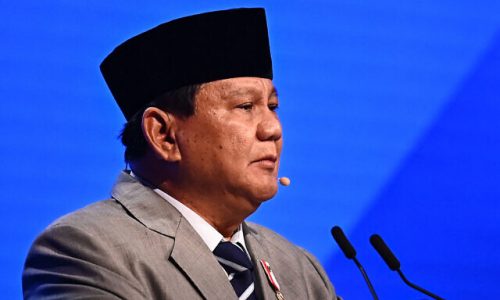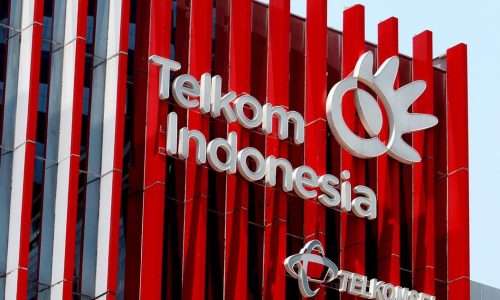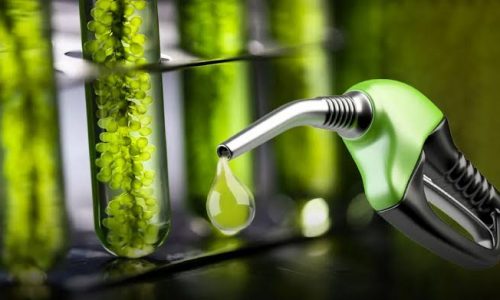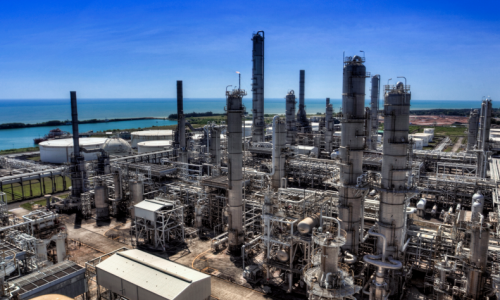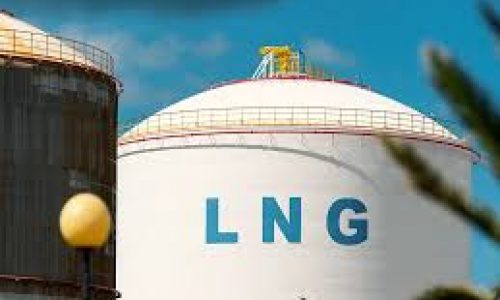Indonesia Business Post interviewed the secretary general of Indonesia Nickel Miners Association (APNI) Meidy Katrin Lengkey on October 15, 2023. APNI was established in January 6, 2017 in Jakarta. The association has a commitment to transform nickel as Indonesia’a natural resource to support the wellbeing and the sustainable development of Indonesian people through the implementation of best mining practices.
The association also prioritize the wellbeing of its members and the people, in addition to focusing on human resource development, social responsibility and environment, and job creation.
Meidy Katrin was born in Manado, North Sulawesi on April 21,1978. She was involved in logging industry before jumping into the nickel mining business and become the secretary general of APNI. She talked about nickel reserve, smelters, price and permit and all other aspects of Indonesia nickel industry.
Q: What is the current nickel reserves in Indonesia, is it true that Indonesia nickel reserves can only last for 10 to 20 years in the future?
A: We have to make it clear to the public that Indonesia is under the spotlight of the world regarding new energy. Indonesia can later become a substitute for Saudi Arabia as the new oil commodity producer because of nickel. Indonesia is one of the 21 nickel producing countries. We have the largest reserves. Why didn’t I say resources? Resources are data on reserves that are already feasible and measurable. To answer the question, how many reserves does Indonesia have in the world? Current data shows 4.5 billion tons of nickel ore, spread across 6 provinces.
In Indonesia, most of the reserves are located in Eastern Indonesia. The largest reserves are located in Southeast Sulawesi, Central Sulawesi and South Sulawesi. The second largest reserves are located in North Maluku, in Maluku, Southeast Maluku, Papua and West Papua.
Actually, nickel reserves are available also in Kalimantan and Sumatera, but not yet feasible to be exploited because of inadequate reserves and inadequate infrastructure. If you talk about production costs, their reserves are not really mineable. The majority of the nickel reserves are in Eastern Indonesia, including Sulawesi and Maluku.
Based on the data from the Indonesian geological agency, Indonesia’s nickel reserves are spread across 6 provinces with a total area of 836,000 hectares, that’s a huge of land. Only 4.5 billion tonnes of mineable resources have been explored. But if you compare with USGS data, Indonesia has 11 billion tonnes of nickels. From 836 thousand hectares of nickel areas there are still a lot of unexplored areas.
There are many factors in conducting exploration activities. Exploration is a gambling. First, when we dig into the ground, we do not always find nickel reserves but already wasted money. Second, the most important factor is forest status. There are many areas that contain nickel, but we’re inaccessible because of the forest status. So, we can’t do any activities if we haven’t obtained a forest use permit from the Ministry of Environment and Forestry.
There are two ministries involved in the nickel mining. We get two production licences by the Ministry of Energy and Mineral Resources and the Ministry of Environment and Forestry. However, after the Ministry of Energy and Mineral Resources gives us a management license, if the area is included is a limited production forest, or a production forest, or a conversion forest, or a protected forest, we have to ask for permission first from the Ministry of Environment and Forestry.
Q: Yesterday there were news that some companies had entered the forest area ?
A: This is what I had mentioned before, more than 60% of the total 836 thousand hectares of nickel areas are still in the forest area. This means that there are other permits that we have to obtain from the government. We have to apply for a permit called forest used permit (IPPKH) from the Ministry of Environment and Forestry. The most common problem is that many of these areas no longer have quotas (for the permit). So, we can no longer do anything.
There is no longer quota from the Ministry of Environment and Forestry. For example, in the Sulawesi region, the forest used permit quota from the Ministry of Environment and Forestry is only 10 thousand hectares or only 5 thousand hectares left. If all nickel mining companies have applied for the forest used permit, there are no more quotas.
Many companies are stuck there. Even though we already have permits from the Ministry of Energy and Mineral Resources in the form of the area of management rights and production rights, if the concession area is still an area that we must apply for an forest use permit, but we cannot apply because of no more quota. Most importantly, if the area is included in protected forest areas, it is automatically impossible for us to get the permit. It has been rejected altogether.
Q: So you will never get permit for protected forests?
A: No way. Unless we take a very long process, including the approval from the local government, local council, and the process takes a very long time. Even though in some cases the status of the protected forests is downgraded.
Again, from the area that I mentioned earlier, 836 thousand hectares, the data that has been measured is 4.5 billion tonnes. That is already a reserve and not a resource anymore. The reserve is mineable, meaning that we already know how much of this stock we can produce, and send to the nickel processing plant. So, this 4.5 billion tonnes nickels is divided into two categories.
So we are very lucky. If I say that nickel is integrated from the bottom to the top like a coconut tree, everything is used. We often heard that nickel is the source of stainless steel. There will be no devices in the world if there is no nickel. So, let us talk about stainless steel first. Stainless steel is processed from nickel ore. The nickel ore is processed into nickel pig iron or ferro nickel. And the nickel pig iron or ferro nickel is processed into nickel mate or pure nickel. And then, the pure nickel is processed into stainless steel.
Q: What about the progress of smelters?
A: There are problem with nickel processing factories that we call smelters. The smelters are pyrometallurgical that use technology called RKIF or Rotarix Kilen Electric Furnace (RKIF). RKIF has one line or one furnace because it needs the highest temperature combustion. This hot furnace requires around 30-50 MW of energy sources. Currently, there are 185 furnaces.
There are two types of smelters. The word smelter is hailed from smelting, which is combustion that uses very high temperatures around 1700-1800 to 2000 degrees more than the sun. The first smelter is Pyrometallurgy that uses high grade nickel as raw material. If the 4.5 billion tonnes of nickel reserve is divided into two, around 930 million tonnes is what we call high grade or saprolite. The grade of saprolite is 1.7% and above. So the nickel ore that contains 1.7% nickel concentrate and above is saprolite. The pyrometallurgy smelters is used to produce Nickel Pig Iron, ferro-nickel to nickel mate and into stainless steel.
There are 86 pyrometallurgy smelters in Indonesia currently. I am quite proud that. It has not even been 10 years since 2017.
From the enactment of Law No. 4 of 2009 that gave 5 years until 2014 for companies to build smelter, none of factories established from 2014 to 2017. How come it is sluggish? No smelters were built from 2014 to 2017. Why?
Then, in 2017, there was ban. The government decided to stop the export of nickel ores and the investors must build smelters. Because of this export ban, we are invaded by many smelters investors who wanted to do processing and refining in Indonesia.
And currently, from 2017 until September 2023 there have been 56 smelters despite the fact that some of the smelters are under one group with different entities. So we can say, we have 56 nickels processing plants or smelters with 185 lines of furnaces.
Q: The 56 smelters dominated by certain countries?
A: Yes, China. Out of the total 56 smelters, around 90% are Chinese smelters. I can’t mention Vale and Antam. Vale is Government to Government contract, a contract of work, although Vale also cooperates with China, which in this case is with Hoauyou Battery Cobalt. Antam is also a state-owned enterprise. However, 90% is still dominated by China. If you look at the current developments, I am really grateful to China, they move quickly, they invest quickly, they are quick to invest, they don’t think too long to invest, and I don’t think it’s just in Indonesia. And for me myself, thanks to China because if there is no China, we will not finish the downstream projects.
Q: If you say that our nickel supply will only last between 10 to 15 years, is it true or not?
A: Back to what was mentioned earlier, the total area of our nickel mining land is 836 thousand hectares, around 50-60% has not been explored, has not been drilled and studied to obtain data on its resources, we have only seen satellite data, the potential is there.
But as I mentioned earlier it is not easy to conduct exploration. There are areas that are still in the forest area. Then there are also many social conflicts. There are also many areas that we have not been able to carry out exploration activities.
So from the 45 billion nickels reserves, the 185 furnaces that I mentioned earlier are pyrometallurgical smelter. I have not mentioned yet hydro metallurgy smelters to process limonite raw materials or low grade nickels. The high grade nickels have a total resource of 930 million tonnes. What about the 3.6 billion tonnes of resources out of the 4.5 billion tonnes? 3.6 billion tonnes is low grade or what we called limonite.
Limonite is used for hydrometallurgical processing or HPAL which produces what is called Mix Hydroxide Precipitate into precursor. If we often hear about NMC or Nickel, Manganese and Cobalt, it is the latest innovation to produce cathode batteries. Remember it’s just a cathode.
Q: So what is the total number of hydro metallurgical smelters?
A: So, there are 56 processing plants for pyrometallurgy, and for HPAL or hydro metallurgy there are only 5 processing plants that process and produce MHP, nickel sulphate, precursors and cathode batteries. This is not yet a full battery. The NMC technology can only produce up to precursors and cathode batteries. The NMC technology can only produce a new cathode battery for the plus. For the minus position, we have to make them from graphite. Unfortunately Indonesia does not have the materials for the Minus. Indonesia must work with other countries. God is fair, if we have everything here, we are alone.
We need Lithium and graphite. In order to make a battery cell, cathode and anode or plus and minus, we need to cooperate with other countries, in this case we request them to send lithium and graphite here. Everything must be available here, we have to make battery here, industrialise the battery here. So we can make battery cells in Indonesia, and Electric Vehicles here in Indonesia. And the battery is not only for EVs. We can sit here right now because we can communicate by mobile phone and the mobile phone uses batteries. Well it must be understood that this is what I call the NMC: Nickel, Manganese, Cobalt.
You have a laptop and mobile phone, at the same time there are already many Electric Vehicles on the road that are not yet from NMC technology. The EV’s battery still use Lithium Ferro Phosphate (LFP) technology.
This is what we called innovation. It’s a new discovery. It turns out that nickel is the biggest electricity transmitter. Because the existence of nickel mate. We are proud of the NMC innovation that will come from Indonesia. We are blessed with extraordinary nickel commodity resources by God. We have 47 critical minerals that can be managed into products such as batteries, stainless steel, aluminium, gold. Indonesia plays a role in 47 critical minerals.
Q: So, Indonesia has a big selling points?
A: As I mentioned earlier, if we make battery cells, we have coppers for example from Freeport, we need aluminum, we have bauxites, we have all minerals except lithium and battery, so we have added values.
Q: So, what is the comparison between Indonesia’s nickel reserves or resources with smelter capacity?
A: I want to explain that 4.5 billion is not the whole number of reserves. From 4.5 billion of nickel reserves, do you know the needs? Do you know why we demand for a stop? Why does the government impose moratorium? Why does the government say the termination only last for 5 years, 6 years or 10 years? Please note, this year 2023 we say that out of 185 pyrometallurgical furnace lines or 5 HAPL smelters that produce batteries, there are already 17 lines for hydrometallurgy. The total nickel ore consumption based on December 2022 data, is 101 million tons. In 2023, the total nickel ore consumption are about 176 million tons.
Let’s say the total nickel ore consumption was 101 million tons in 2022, and in 2023 there are 176 million tonnes. What about the next two years? Of the 61 factories, 56 are for smelters and 5 are hydrometallurgy smelters. From the 61 smelters, some are still under construction and there are other smelters that have not completed their licensing process. There will be 137 smelters constructed later in the next 2 or 3 years. There are those who are doing constructiong smelters silently.
Why? As I mentioned earlier, one furnace needs 30MW-50 MW of electricity. Currently, the existing power plant still uses coal as raw material, while we have the issue of zero emission, carbon footprint, not to mention the pollution now Jakarta is really excited. The worst pollution in the world.
Power plants from coal can’t be built anymore, except those that are already running. The question is where do we want to find energy from? Renewable from where solar panels, wind, or using hydro. Smelters under construction are still looking for ways out for their source of energy. I am sure the Indonesian government will find the best way. Because the smelters investors have invested.
Some of the smelters are already in production, some are under construction and some are finalising licences, procuring land and so on. So Indonesia will have 137 nickel processing plants in the next 2 or 3 years. If all of the smelters have been in production mode, the total nickel ore consumption needs are 467 million tonnes.
Q: So you mean, total production exceeds demand?
A: The total demand exceeds our reserve capacity. As I mentioned from 4.5 billion tonnes of reserves, if we divide by one year, the total consumption is 400 million tonnes. So how many years left? Again we need to keep in mind on the span of the reserve and the capacity of this nickel processing plant. We need back up. It is impossible to invest in smelters that last only for 5 years, 6 years, 8 years because nickel processing plant s is a very large investment.
However, currently the government is opening new nickel areas. There are still many areas that have not been explored. If we have explored all 836 thousand hectares, our resources will definitely increase, not only 4.5 billion tonnes.
Secondly, we, as APNI, is not only struggling for “increasing added value.” We are fighting for mineral benchmark prices, in order to make domestic transactions fair. And most importantly, royalties will also increase.
Q: How about royalties? Nickel companies pay royalties?
A: There are two type of nickel processes in Indonesia. The first one is integrated smelter, a nickel mining company builds a smelter inside the mine. So the integrated smelter consumes its own nickel mine reserves. Secondly, there is also non-integrated smelter of stand alone smelter.
The stand alone smelters don’t have mines, they have to buy the nickel ores from other mines, and they cooperate with the mine. So they can buy the mine or they buy the nickel ores. But whatever it is, if we talk about stand alone smelter, the smelter needs to pay the royalty for the final product. The nickel ore is produced, processed into NPI or whatever processing it is, the end result is then paid to the state.
Q: So it is included local company?
A: For example Antam. Antam is integrated, so they set up a smelter under their name in their own mine.
While a stand alone nickel smelter has no choice, they buy nickel ores from other miners. For example, you has a smelter that buys nickel ore from me. I pay royalties, not on the final product but on the raw material. So that is why we are fighting for the benchmark price of minerals, because the transaction is not fair for us. If we calculate 10% of state revenue, the government will secure 10% higher of revenue if the price is high.
Then we also calculate the transaction conditions. Based on the regulation of the Energy and Mineral Resource Ministry Number 11/2020 on Mineral Benchmark Price that we, APNI releases every month after the Ministry sign it, the transaction must be FOB based. It means that the transaction should be done on my port. Please remember that it is APNI who fight for this benchmark price.
If you wants to buy my nickel ore, you have to pay at my port after the surveyor company issue the results of the certificate of analysis.
There is always a conflict or difference in analysis. Well this difference in analysis affects the selling price, affecting the payment. Of course, if there are different analyses, there must be a difference price in the contract that needs to be paid. We are also striving for all transactions to be FOB-based and I have mentioned the success of FOB.
Q: If, for example, from the beginning it was agreed between the buyer and the seller?
Maybe if I say this, it’s based on contract, sometimes the contract is what it is.
Q: This means that not all sellers and buyers are in accordance with ?
A: Yes, that’s how it is, because there are many conflicts I think. We are still new, we, Indonesians are new players. We’re still kindergarteners, we still need to learn more about the process, the transaction, the price and most importantly the Environment, Social and Governance issues. We were rejected by the IRA, the Inflation Reduction Act of the United States of America for incentives to American companies that buy nickel from Indonesia.
What does it contain? One is environmental issue. We are new kid. But the new kid on the block that has successfully develop nickel downstream of industry. And other countries are very jealous of Indonesia. In this case, we are still in the process of on how we see that firstly, Indonesia has the world’s largest nickel resource.
Secondly, I am proud that Indonesia is currently the top producer in the world. There are 10 top ten nickel producing companies in the world, 9 are operating in Indonesia. There is only one thing left, how do we persuade the Russian company, from Moscow, to come here. So we want to invite everyone. Because after all, they need Indonesia. And as I mentioned earlier, we are not only the largest producer. It’s time for Indonesia to have its own pricing. We are striving for the Indonesia Nickel Price Index.
Q: As for the pricing itself, how much is the selling price of nickel ore at the miner level? Then is it profitable enough to compare the selling price to the production cost?
A: Of course, APNI has struggled for almost 3 years on a benchmark price. Don’t just buy nickel ore at the price you want, because it involves state revenue.
Q: Who decides the benchmark price?
A: So, APNI released a benchmark mineral price in 2017. But at the time o, there were not so many smelters. At that time, our price base was from … how do we make a benchmark mineral price? We calculate the benchmark price from the 3-month average of the London Metal Exchange. And we have a special formula, that include the nickel ore content itself. After calculating all elements, and we found that it is very worthed. However, what about the share for miners? It means that that miners must have a profit. If there is no profit for miners, how can they carry out their activities and obligations as a miner after mining, reclamation, CSR? There are so many obligations of miners. Well, in this case the Mineral Benchmark Price that we determine is also fair for processing factories.
We do not also that Indonesia as the source of nickel set a very high price. As I mentioned at the time, the way to calculate mineral price benchmark is 3 months average of London Metal Exchange price. We calculate the average and then we multiply by the content of the nickel ores.
Q: Who determines the formula of the benchmark price ?
A: At that time, there was an agreement between us miners, processing factories and the government, in this case the Ministry of Energy and Mineral Resources. The problem is that the processed nickel products that I mentioned earlier such as ferronickel, NPI, MHP as l raw materials for steel, around 90% or 100% of them are all exported to China. They are still needed to be processed. Because they are second class nickels.
Processed nickel products then sold in Chinese market based on the Shanghai on spot price. When we export them from Indonesia we still use the London metal price.
So far for the trading of nickel processing products it is still determined by business to business. The government has no right to prohibit you from selling to China. If I build an industry and the government intervenes, I can’t sell to A, B, C, D, it is useless? China currently is the biggest market for processing, especially for batteries. China also is still the biggest producers of stainless steel even though there are several other countries that are processing nickels into stainless steel.
What must be understood is that raw materials price is based on the 3 month average of London Metal Exchange price of nickel ore, while the nickel products are exported to China by using the Shanghai Metal Price on spot. So there is a visible difference, between the price of nickel ore which is 3 months average of LME and the price of nickel products that are sold is on spot, today’s price is today. There is a gap or difference between London Metal Exchange and Shanghai Metal price.
Q: Which price is better for miners or more favourable?
A: At the time, when LME price was still unusually high, the LME price is more favourable for us as miners. It was an average price in comparison to on spot price of Shanghai Metal Exchange. However, God is fair may be. In the last 1,2 and 3 month the price of LME has dropped. As world class commodity, we cannot determine whether todays price is high or drop. Because of the difference between the price of raw materials and the products, we finally request the government to intervene. As the nickel producers and the one who process the nickel, why we let London and Shanghai determine the price of the nickel? Why we do not crate the price for ourselves? Thanks God the government agreed, at this time APNI is cooperating with several world commodity pricing, such as LME, Fresh Market, Shanghai Metal Market. We are cooperating with them to make our own pricing.
In term of nickel pricing, we are kindergarteners. There are global market side, and world trade aspects, and also there is a global economy side. Currently we have Memorandum of Understanding with several parties and the cooperation is on process. Please pray for us, so there will be a benchmark for how many revenue will be secured by the state. So the price of our nickel will not be based on LME or Shanghai Metal market. And our pricing must be fair. If we see it, it is not only about the money or the price but also the pride of Indonesia. So people can sell Indonesian products at Indonesian prices so that there will be Indonesian brand overseas.
Q:Will the price be used from next year?
A: Please pray, we are entering the political year. But all this time APNI has been fighting based on data, facts and figures, so far this has been accepted by the government.



